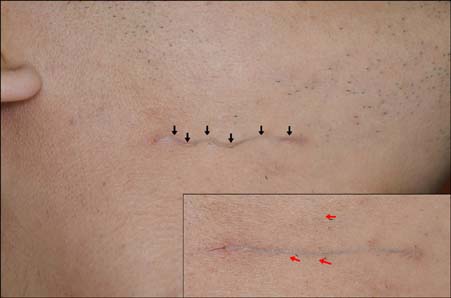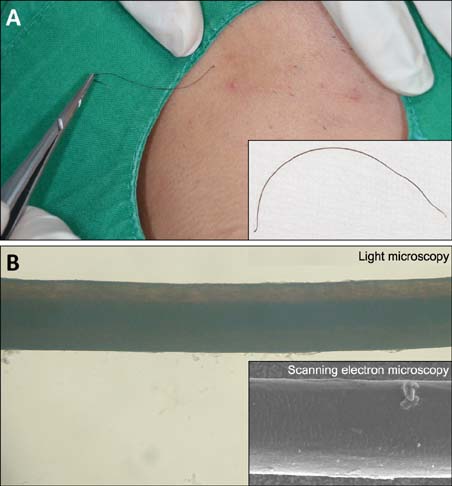Ann Dermatol.
2015 Oct;27(5):635-636. 10.5021/ad.2015.27.5.635.
Creeping Hair in the Beard Area
- Affiliations
-
- 1Department of Dermatology, Kyungpook National University School of Medicine, Daegu, Korea. kimdw@knu.ac.kr
- KMID: 2171475
- DOI: http://doi.org/10.5021/ad.2015.27.5.635
Abstract
- No abstract available.
MeSH Terms
Figure
Reference
-
1. Ishida Y, Matsubara K, Takai M, Horiguchi Y, Yoshikawa Y. A case of 'creeping hair' resembling cutaneous larva migrans. Clin Exp Dermatol. 2009; 34:256–257.
Article2. Sakai R, Higashi K, Ohta M, Sugimoto Y, Ikoma Y, Horiguchi Y. Creeping hair: an isolated hair burrowing in the uppermost dermis resembling larva migrans. Dermatology. 2006; 213:242–244.
Article3. Luo DQ, Liu JH, Huang YB, He DY, Zhang HY. Cutaneous pili migrans: a case report and review of the literature. Int J Dermatol. 2009; 48:947–950.
Article4. Kim JY, Silverman RA. Migrating hair: a case confused with cutaneous larva migrans. Pediatr Dermatol. 2010; 27:628–630.
Article5. Franbourg A, Hallegot P, Baltenneck F, Toutain C, Leroy F. Current research on ethnic hair. J Am Acad Dermatol. 2003; 48:6 Suppl. S115–S119.
Article



